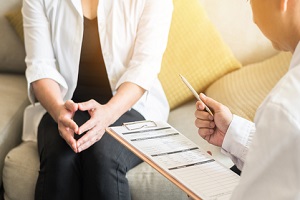 Every woman should make a regular GYN wellness screening a part of their lifelong healthcare regimen. Annual GYN wellness screenings help women and their doctors detect health problems before they become serious or even deadly. How frequently a woman should have one and what the wellness screening exam entails depends on the woman’s age and her unique health profile.
Every woman should make a regular GYN wellness screening a part of their lifelong healthcare regimen. Annual GYN wellness screenings help women and their doctors detect health problems before they become serious or even deadly. How frequently a woman should have one and what the wellness screening exam entails depends on the woman’s age and her unique health profile.
Initial GYN Wellness Screening For Young Women Ages 13 To 15
Beginning around the onset of puberty and before a teenage girl becomes sexually active, she should have her first GYN wellness exam with a gynecologist. At this age, the gynecologist will become familiar with the patient’s overall medical history.
The gynecologist will ask about the onset of the patient’s menstrual cycle and determine her body mass index (BMI). The doctor will also check the patient’s height, weight and blood pressure. Shet likely will be screened for signs of the following conditions:
- Hypertension (high blood pressure)
- Obesity
- Eating disorders
- Physical, sexual or emotional abuse
- Learning or behavioral disorders
- Substance abuse
- Depression
- Sexual activity
This first wellness examination does not include a pelvic examination unless the patient has become sexually active. In those cases, the gynecologist will examine her for sexually transmitted diseases and treat any that may be present. In somecases, the patient will be vaccinated for HPV.
The gynecologist will also provide guidance about safe sex practices, contraceptives and the importance of annual wellness screenings and other preventive health services.
Annual GYN Wellness Screening For Sexually Active Teens & Women Ages 19 Through 39
Once a woman becomes sexually active or reaches the age of 19, the wellness exam includes additional procedures and tests. Women in this group are interested in reproductive health, including options for contraception, fertility and cancer screening.
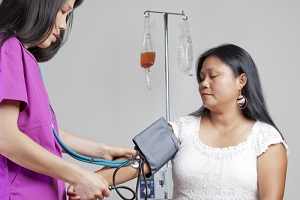 These examinations should also include screenings for other health conditions that the primary care provider may have overlooked (for example,obesity, diabetes, hypertension and a variety of autoimmune diseases).
These examinations should also include screenings for other health conditions that the primary care provider may have overlooked (for example,obesity, diabetes, hypertension and a variety of autoimmune diseases).
Specifically, the annual wellness exams for women over age 21 include pelvic exams and pap smears. These are key to early detection and treatment of a number of reproductive and pelvic health issues. Breast examinations begin once a woman reaches the age of 25.
Also, during the wellness exam for women in this age group, the gynecologist will examine the patient for common health conditions that can become very serious if left untreated, such as:
- Cancer, particularly breast, cervical and ovarian
- Endometriosis
- Fibroids
- Pelvic infections
- Vaginitis
- Sexually transmitted diseases
- Pelvic inflammatory disease
- Injuries caused by physical or sexual abuse
Annual GYN Wellness Screening For Women Ages 40 Through 64
Women in this group will begin experiencing changes in hormonal levels as they enter perimenopause and then menopause. The wellness examination includes many of the screenings previously mentioned, but for most patients in this age group, the examination will focus less on the patient’s fertility and more on health issues associated with the aging process.
New screenings will evaluate the patient’s hormone levels and overall wellness. Women can expect the wellness exam to screen for a wider range of health issues like:
- Bone density
- Mammogram
- Colorectal disorders, including cancer
- Diabetes
- Hypertension
- Cholesterol and triglyceride levels
Annual Wellness Examinations For Women Age 65 & Older
As women age, they may think it is not necessary to see their gynecologist regularly. In fact, it is important for older women to continue with their annual GYN wellness exams to ensure healthy aging.
The gynecologist will provide women with information about preventing diseases that commonly affect aging patients, such as cardiovascular disease and depression. The doctor will evaluate the patient, refer her to a specialist if needed and monitor for a range of health issues, including:
- Chronic respiratory disease
- Skin cancer
- Alzheimer’s disease and dementia
- Hypertriglyceridemia
- Obesity
- Osteoporosis and osteopenia
- Injuries caused by accidents or falls
What Else Should You Expect During A GYN Wellness Screening?
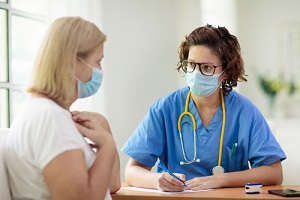 No matter your age, during a GYN wellness exam, you will be asked questions about your lifestyle, overall health and medical history. You should answer these questions as honestly as possible to receive the best care. Your conversations with your health care provider are confidential and cannot be disclosed to anyone without your consent.
No matter your age, during a GYN wellness exam, you will be asked questions about your lifestyle, overall health and medical history. You should answer these questions as honestly as possible to receive the best care. Your conversations with your health care provider are confidential and cannot be disclosed to anyone without your consent.
Rest assured that conversations with your doctor or anyone in the doctor’s practice will remain private. Please speak openly about your alcohol or drug use (whether legal or otherwise), smoking, symptoms, infections and any other issue that could affect your health.
Contact The Women’s Health Experts For More Information
The health experts at Raleigh Gynecology and Wellness specialize in women’s health. They are available to help you with your questions or talk to you about any health issues you may be experiencing. Contact them for more information and to schedule an appointment.

 Routine
Routine The breasts are covered in thin, sensitive skin that requires ample hydration. Moisturizing the skin on and around the breasts will help prevent dryness and keep the breasts soft and supple. Avoid lotions or creams that contain irritating chemicals that may cause soreness or rashes on the chest area. If the skin does react to a chemical in a moisturizer, discontinue using it and speak with a healthcare provider about safely treating the rash.
The breasts are covered in thin, sensitive skin that requires ample hydration. Moisturizing the skin on and around the breasts will help prevent dryness and keep the breasts soft and supple. Avoid lotions or creams that contain irritating chemicals that may cause soreness or rashes on the chest area. If the skin does react to a chemical in a moisturizer, discontinue using it and speak with a healthcare provider about safely treating the rash. Genetics play a strong role in breast cancer risks. A history of ovarian or breast cancers on either side of a woman’s family sometimes increases the risk of developing breast cancer.
Genetics play a strong role in breast cancer risks. A history of ovarian or breast cancers on either side of a woman’s family sometimes increases the risk of developing breast cancer. 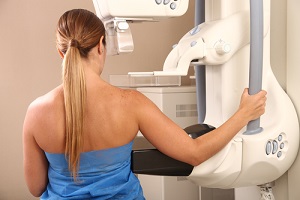
 The average mammogram takes about 20 minutes and is performed by a qualified professional. If possible, a patient should bring their old images to the appointment or grant the health care provider access to these images from the prior provider. This allows the new provider to compare old and new results which can help diminish the risk of false negative or false positive readings.
The average mammogram takes about 20 minutes and is performed by a qualified professional. If possible, a patient should bring their old images to the appointment or grant the health care provider access to these images from the prior provider. This allows the new provider to compare old and new results which can help diminish the risk of false negative or false positive readings.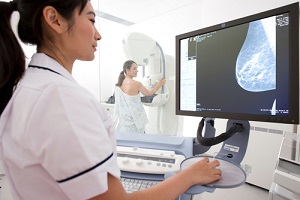 It is important not to move during the procedure as any movement can cause the images to blur. The technician will ask the patient to hold her breath for several seconds while the image is taken. If a patient is prone to fainting during medical procedures, a provider may recommend that the patient sit in a chair during the mammogram.
It is important not to move during the procedure as any movement can cause the images to blur. The technician will ask the patient to hold her breath for several seconds while the image is taken. If a patient is prone to fainting during medical procedures, a provider may recommend that the patient sit in a chair during the mammogram. 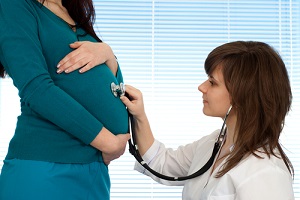 A
A 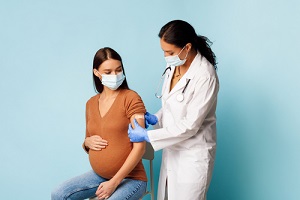
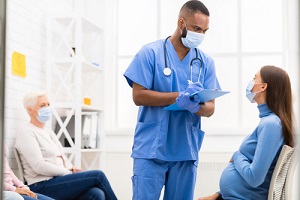
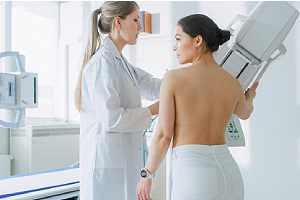 Regular breast
Regular breast  Many women who have had breast cancer reported that the first sign of their breast cancer was a new breast lump that they discovered during a self-examination. Self-examination is important because it helps you improve your breast awareness so that you understand what is normal and better able to detect changes in them.
Many women who have had breast cancer reported that the first sign of their breast cancer was a new breast lump that they discovered during a self-examination. Self-examination is important because it helps you improve your breast awareness so that you understand what is normal and better able to detect changes in them.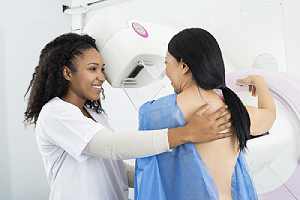 A mammogram is a special x-ray of your breasts. A mammogram can detect problems in your breasts and cancer before you can feel a cancerous lump. A screening mammogram can provide your doctor with a baseline of what is normal for your breasts. After that, the frequency of a screening mammogram depends on your age and health profile. Your doctor can advise you on how often you should have a screening mammogram for optimal breast care.
A mammogram is a special x-ray of your breasts. A mammogram can detect problems in your breasts and cancer before you can feel a cancerous lump. A screening mammogram can provide your doctor with a baseline of what is normal for your breasts. After that, the frequency of a screening mammogram depends on your age and health profile. Your doctor can advise you on how often you should have a screening mammogram for optimal breast care.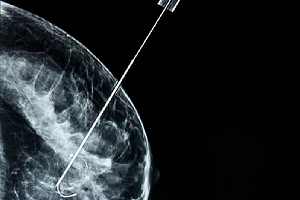 A biopsy is an out-patient procedure where your doctor uses a small needle to take tissue from part of your breast. The tissue is evaluated under a microscope. A biopsy is the only way to know for sure if the tissue is cancerous.
A biopsy is an out-patient procedure where your doctor uses a small needle to take tissue from part of your breast. The tissue is evaluated under a microscope. A biopsy is the only way to know for sure if the tissue is cancerous.